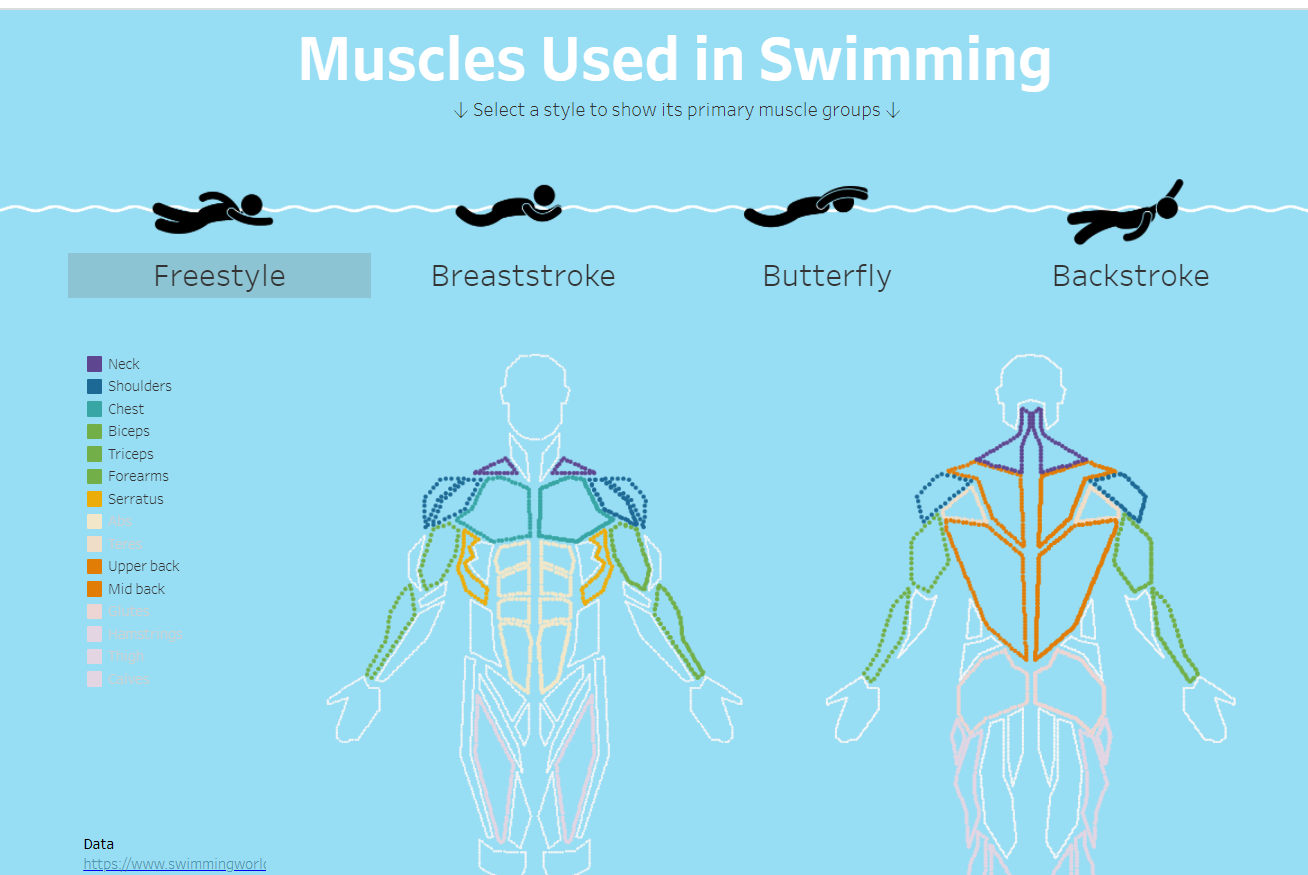Aquatic therapy is one branch of recreational therapy where individuals are engaged in activities in a swimming pool. I am interested in this area of recreational therapy because I enjoy active sports, and I think that aquatic therapy, in particular, can be very helpful for many patients. One of the key skills that a person has to acquire to swim is the freestyle arm stroke with both arms. This paper will describe the specifics of the freestyle arm stroke and provide a diagram describing the muscles involved in this movement.
In order for an individual to perform the freestyle arm stroke successfully, they should muster a sequence of motions. The freestyle stroke begins with a person on their stomach, moving their arms and legs interchangeably. One should be floating on their chest in the freestyle stroke, with the body in a straight line and their face parallel to the pool’s bottom. This flat and level body stance might help the patient glide through the water more quickly. The individual should begin by stretching as far in front of them as possible with their hands while keeping the fingers slightly open and relaxed. The next step is to swivel one’s shoulder to get a high elbow and pull water as far in front of the head as feasible. The hand should finally emerge on the outside of the hip during the recovery period.
The specific muscles and muscle groups that a person should engage when performing a freestyle arm stroke is the following: “deltoids, latissimus dorsi, which are the muscles down the sides of the back, trapezius, triceps, and biceps” (“Your guide to swimming strokes,” 2019, para. 1). The illustration of these muscles can be seen in Figure 1. Generally, the muscles of the back and neck are also engaged when performing the freestyle arm stroke, while the lower body muscles are mainly unengaged.
While the freestyle stroke is a good way of strengthening the muscles of the back and biceps, deltoids, and trapezoids, the patient can also perform some additional exercises to enhance the strength of these elements. The exercises that can help strengthen the muscles that are engaged in the freestyle muscle stroke include biceps exercises, such as bicep curls. This exercise is performed with dumbbells that an individual can lift at least ten times. The exercise is performed standing up with the legs hip-width apart, and the individual should place the dumbbells alongside their body. Next, one should lift the dumbbells to their shoulders while exhaling, and the elbows should stay close to the body. After that, the dumbbells should be returned to the original position, and the patient should repeat this exercise at least ten times.
Another exercise that is suitable for trapezoids is the overhead dumble farmers’ work. This exercise is also performed using dumbells, similarly to the previous one. The patient should place the dumbells above their head, with their core muscles engaged. Next, they should make 10 to 20 steps forward; however, the walking should be done in a “from hill to toe” manner. This exercise can be performed with one dumbbell heavier than the other, in which case the individual should repeat the exercise after switching the weights from one hand to the other. These two exercises are helpful for strengthening the most important muscles for the freestyle arm stroke.

References
Shijia, W. (2020). Muscles used in swimming. Web.
Your guide to swimming strokes. (2019). Web.